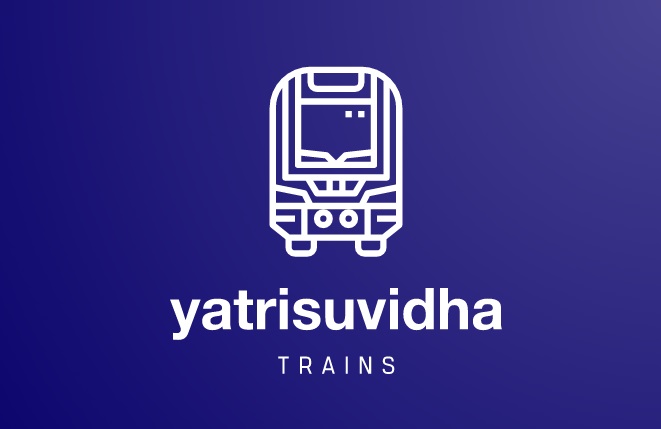
the Railway Waiting List Ticket Confirmation Chances
For millions of passengers who travel by Indian Railways every day, waiting list (WL) tickets are a common experience. When trains reach full booking capacity, passengers have the option to book WL tickets, which means they’ll get a confirmed seat only if existing passengers cancel their bookings.
Several factors affect whether a waiting list ticket will get confirmed. Indian Railways has multiple waiting list types based on the journey and quota category, each with varying chances of confirmation. Let’s break down the most common types: RAC, GNWL, RLWL, PQWL, and TQWL, explore how each works, and analyze which is most likely to get confirmed first.
1. Reservation Against Cancellation (RAC) Tickets
Description: RAC tickets are a unique category that allows passengers to travel even without a confirmed berth. When you have an RAC ticket, you are guaranteed to board the train and have a seat, though you may have to share it with another RAC passenger if the ticket isn’t fully confirmed. If other passengers cancel or there’s availability, an RAC ticket could convert to a confirmed berth.
Confirmation Chances: RAC tickets have a higher chance of confirmation than most WL categories because they are already prioritized for conversion to confirmed seats if cancellations occur.
Priority Level: Highest among waiting lists.
Confirmation Rate: Generally high, especially if the train has a significant cancellation history or on busy routes where multiple RAC tickets are converted into confirmed seats.
2. General Waiting List (GNWL)
Description: GNWL, or General Waiting List, is the most common WL category. GNWL applies to passengers traveling from the train’s origin or boarding stations near the origin, making it a priority category.
Confirmation Chances: GNWL tickets have the highest chances of confirmation among waiting list categories due to their prioritization. The confirmation likelihood increases if you book well in advance or if you’re boarding from the train’s origin station.
Factors Affecting Confirmation:
Time of Booking: The earlier you book, the higher your WL ranking within the GNWL category.
Cancellation Pattern: On some routes, there’s a higher history of cancellations closer to the travel date, so your GNWL ticket might confirm even if it’s far down on the list initially.
Priority Level: Second highest after RAC, but varies with train routes.
Confirmation Rate: High on busy routes and popular long-distance trains originating from major cities.
3. Remote Location Waiting List (RLWL)
Description: RLWL applies to passengers boarding from stations other than the train’s origin or destination. RLWL tickets are issued for travelers boarding at remote stations that the train passes through.
Confirmation Chances: RLWL tickets generally have lower confirmation chances than GNWL. Since the train’s seat quota is smaller for remote locations, fewer seats are available for RLWL passengers, and cancellations at intermediate stations are rarer.
Factors Affecting Confirmation:
Route Popularity: RLWL confirmation chances are typically lower, especially on busy routes where most passengers board from the train’s origin.
Quota Limitations: RLWL relies on the quota available at the specific boarding station, which is generally lower than GNWL.
Priority Level: Medium, but often less than GNWL and RAC.
Confirmation Rate: Moderate to low, often depending on the station from where passengers with confirmed tickets board and deboard.
4. Pooled Quota Waiting List (PQWL)
Description: PQWL is a type of waiting list for passengers traveling between two intermediate stations rather than the train’s origin or final destination. PQWL is usually applicable on long-distance routes, especially for passengers with short travel legs in between the primary stations.
Confirmation Chances: PQWL tickets have lower chances of confirmation than GNWL and RAC due to the small quota allocation. This quota is typically limited and may not have frequent cancellations, reducing chances.
Factors Affecting Confirmation:
Short Travel Legs: PQWL confirmation likelihood is lower on popular routes or for journeys between high-demand stations where passengers are more likely to book in advance.
Lower Priority in Allocation: Since PQWL tickets do not involve travel from the train’s origin or final destination, these tickets rank lower in the allocation hierarchy.
Priority Level: Low, usually just above TQWL.
Confirmation Rate: Low, especially during peak seasons.
5. Tatkal Waiting List (TQWL)
Description: Tatkal tickets are a special category for last-minute travelers, and if these tickets reach the WL stage, they’re placed on the TQWL. These tickets are typically for passengers who book tickets under the Tatkal scheme, which is only available one day before the journey.
Confirmation Chances: TQWL tickets have very low chances of confirmation, as Tatkal tickets are not prioritized once WL status is reached. If cancellations do happen, other WL categories (especially GNWL) are given preference before TQWL.
Factors Affecting Confirmation:
Time-Sensitive Nature: Since TQWL tickets are last-minute bookings, cancellations are infrequent and uncertain.
Tatkal Quota: If there are no available seats under the Tatkal quota, the chances for TQWL confirmation are slim.
Priority Level: Lowest among waiting lists.
Confirmation Rate: Very low; only recommended if no other options are available, and it’s often a last-resort choice.
Factors Influencing Waiting List Ticket Confirmation
Train Route Popularity: Busy routes, such as those connecting major cities, typically have higher cancellation rates, thus improving GNWL and RAC confirmation chances.
Travel Season and Festivals: Peak seasons (such as summer, Diwali, or New Year) often see higher bookings, leading to fewer cancellations.
Booking Timing: Early bookings typically rank higher on WLs, so those who book early in GNWL or RLWL categories may have better confirmation chances.
Class of Travel: Higher-class tickets (like 1AC or 2AC) have lower demand, which might result in higher chances of confirmation for waiting list tickets.
Quota Availability: Indian Railways allocates specific quotas for different passenger categories. General quota (GNWL) has the highest allocation, while PQWL and TQWL have smaller allocations, reducing their confirmation chances.
Strategies to Increase Waiting List Ticket Confirmation Chances
Book Early in General Quota: If possible, aim for GNWL by booking well in advance, especially for long-distance or cross-state trains.
Check for RAC Tickets: Opt for RAC if available, as it guarantees travel with at least a seat, even if a confirmed berth isn’t possible.
Monitor Confirmation Trends: Use apps or websites that provide information on confirmation trends for specific trains and routes. This can help gauge the likelihood of confirmation based on historical data.
Consider Higher Classes: Often, higher classes like 1AC or 2AC have better chances due to lower demand and higher cancellation rates.
Opt for Flexi-Fare Trains: Premium trains with flexi-fare structures often see fewer last-minute bookings, possibly resulting in higher confirmation rates for WL tickets.
the waiting list ticket confirmation depends on various factors, including the type of WL category, time of booking, travel season, and the specific train route. Here’s a quick recap of WL priorities:
RAC – Highest chance of confirmation.
GNWL – High chance, especially for major origin-destination routes.
RLWL – Moderate chance, depends on station-specific quotas and travel season.
PQWL – Lower chance, restricted to intermediate station passengers.
TQWL – Lowest chance, suitable only as a last resort.
Understanding the nuances of each waiting list type can help passengers plan their journeys more effectively, especially on high-demand routes. By booking strategically and being aware of WL priorities, passengers can improve their chances of securing a confirmed seat.

Leave a Reply